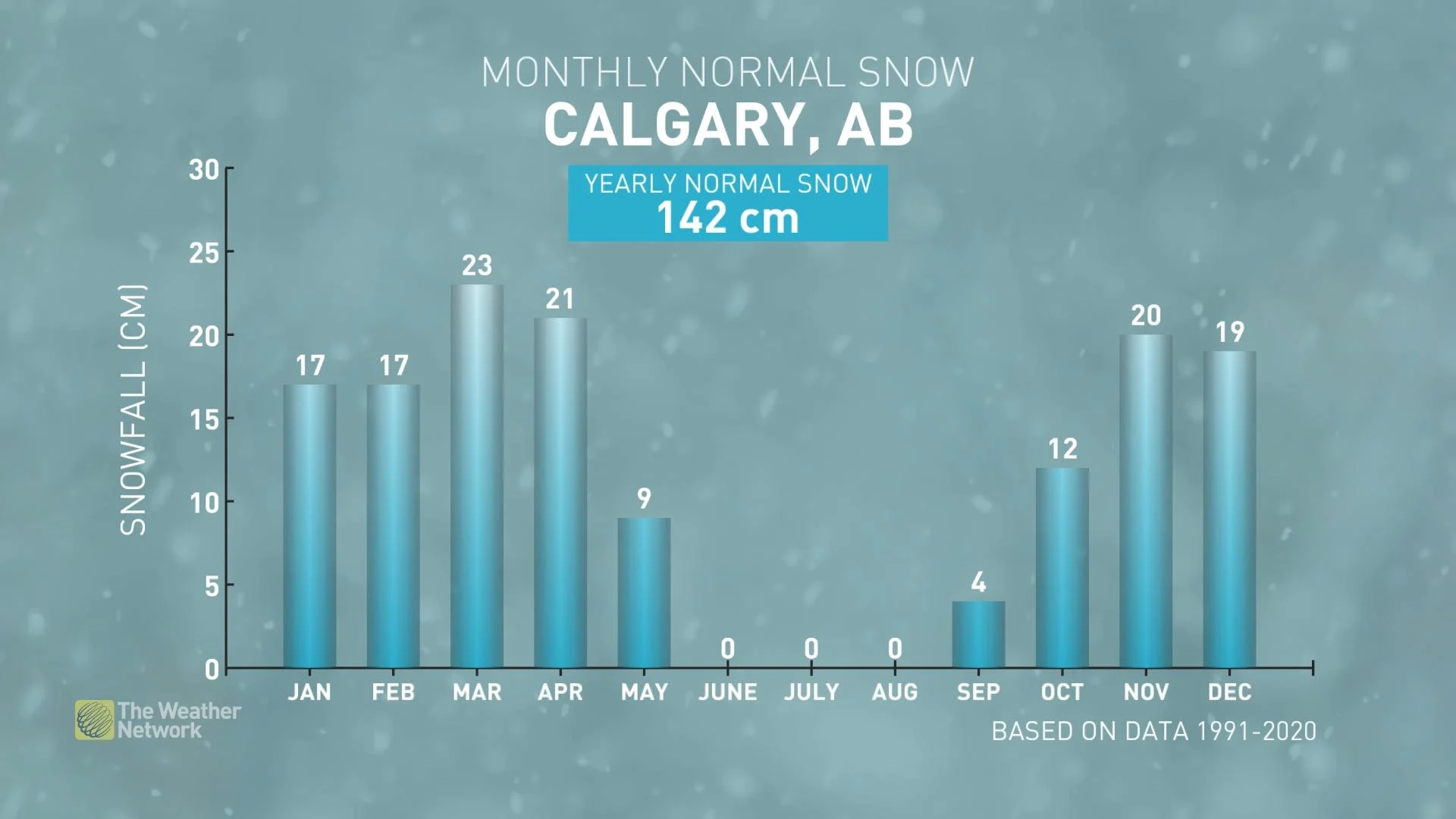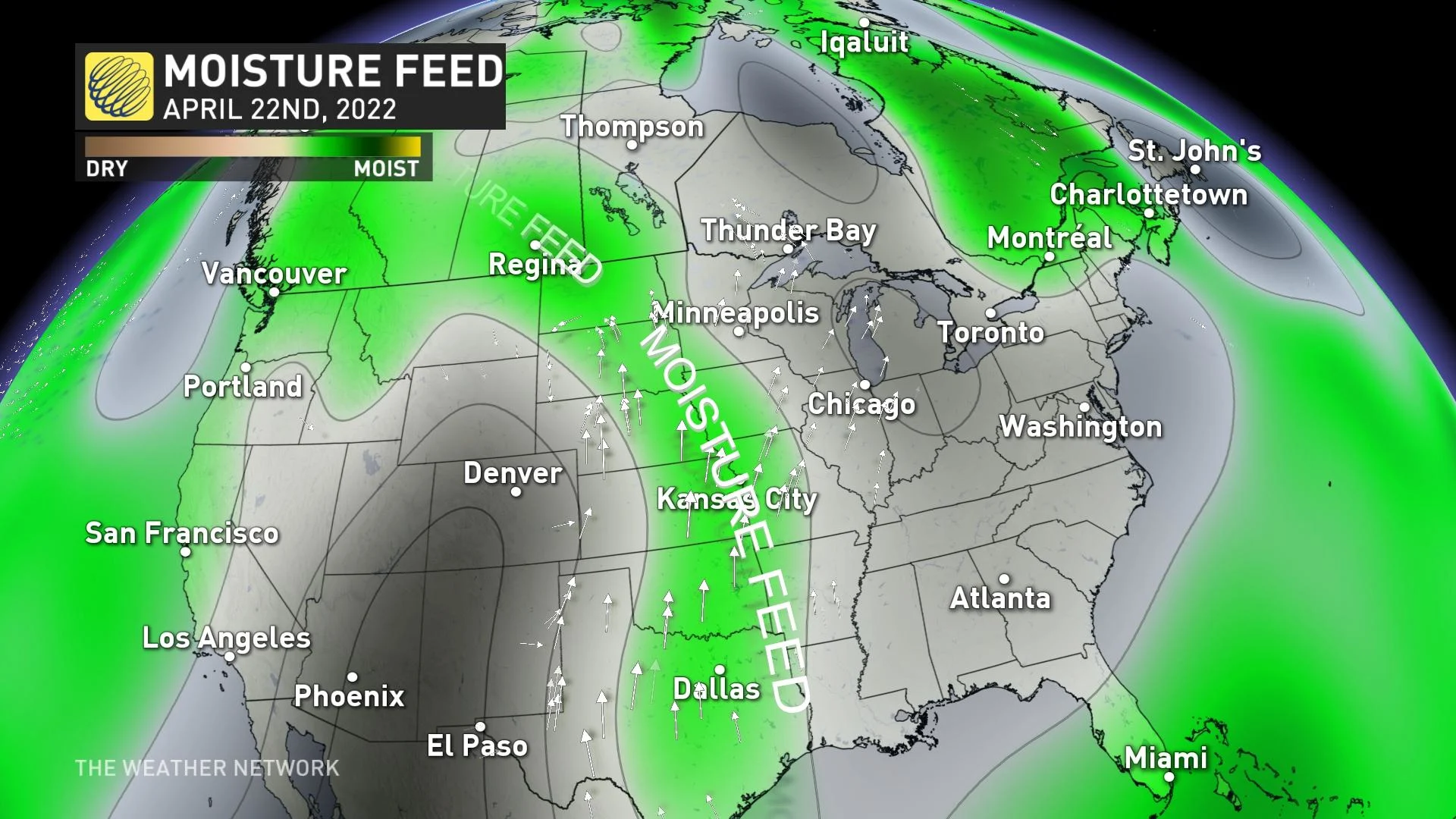
How the tropics help produce big springtime snows on the Prairies
Snow is synonymous with spring on the Prairies. Here’s a look at why these spring systems are often snowier than their deep winter counterparts.
Spring is a beautiful time of leaves budding, flowers blooming, and blizzards raging on the Prairies.
It may seem counterintuitive, but the changing seasons can make Prairie snowstorms more prolific and productive in the spring than they are in the dead of winter. Here’s a look at how these springtime snowstorms build their muscle.
DON'T MISS: Sick of spring snows? There's lots to love and learn about spring
Winter’s storms are often starved of moisture
Anyone who suffers from sore sinuses and itchy skin knows that the relentless dryness of an average winter day is brutal. Cold air has a tough time accommodating much water vapor, so it’s hard to find much humidity during the winter months.

However, that doesn’t mean that there’s no moisture in the air. It still snows on the Prairies when temperatures are in the double-digits below zero. These snowfalls just aren’t very productive. The lower moisture of a truly frigid day allows for dry, powdery snow that has a difficult time amounting to much on the ground.
That all starts to change as the seasons change.
Spring’s storms are influenced by the tropics
As the sun climbs higher in the sky and the lower latitudes begin to warm up through the late winter and early spring, we start to see a greater clash between contrasting air masses across the U.S. and Canada.
This greater temperature contrast allows the jet stream to grow stronger, which in turn can create stronger low-pressure systems that produce more dynamic weather along their paths.

MUST SEE: Spring weather words you need to know
There’s still plenty of cold air locked over Canada deep into March and April, even as classic springtime storms bring comfortable warmth and rowdy thunderstorms south of the border.
These low-pressure systems cross the border with plenty of atmospheric moisture pumped straight from the Gulf of Mexico and tropics to the south, providing the juice needed for fluffier snow and heavier snowfall rates across the Prairies, both of which contribute to deeper accumulations.
The increased moisture doesn’t just increase the tenacity of blizzards on the eastern Prairies. Greater moisture content in the atmosphere helps to improve the efficiency of snowfall across the region. On average, March and April are Calgary’s snowiest months of the year, typically notching more than 20 cm of snow each.
Thumbnail courtesy of Evelyn Tait in Calgary, Alberta.










